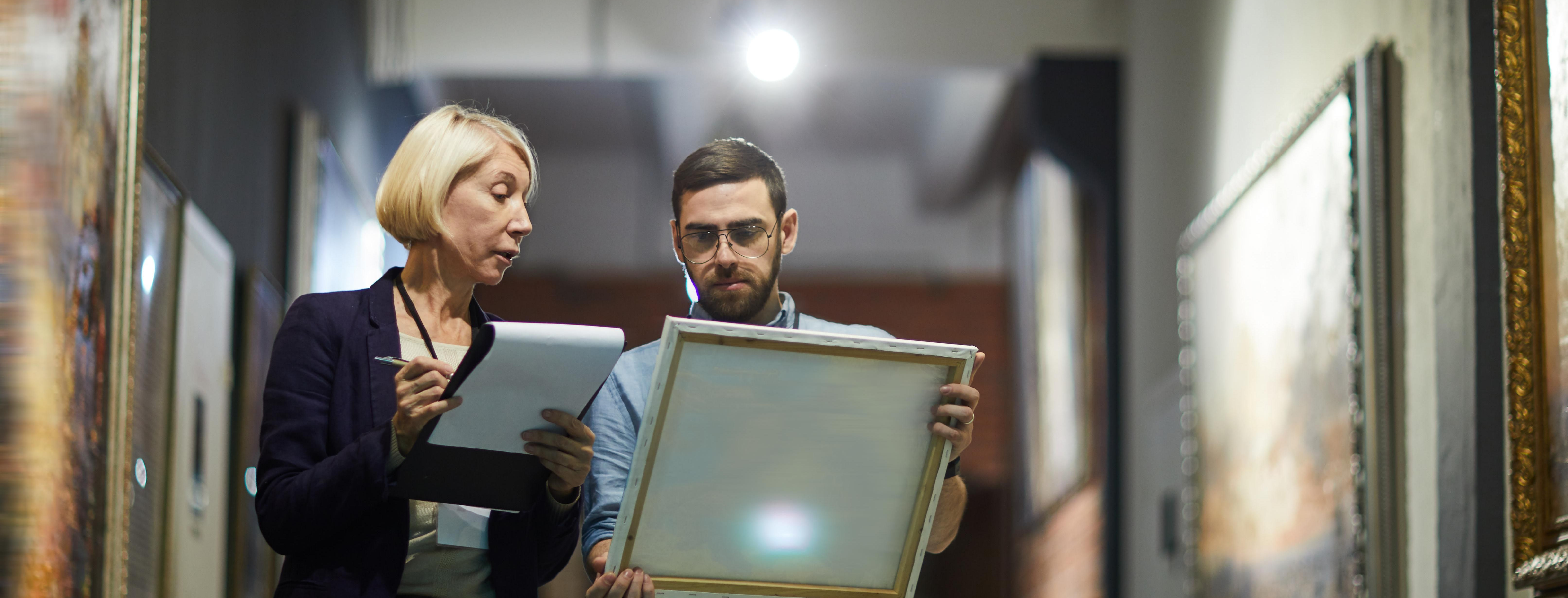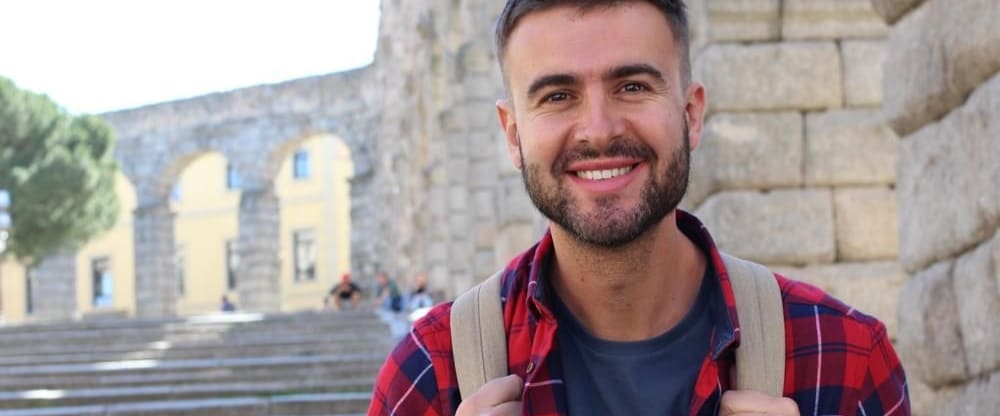What is Curating and Why Should You Study It
If you’ve ever stepped foot in Paris’ Musée du Louvre, Beijing’s National Museum of China, New York’s Metropolitan Museum of Art, London’s Tate Modern, St. Petersburg’s State Hermitage Museum, Madrid’s Reina Sofía, or any of the world’s other 55,000 museums, you’re probably familiar with just how amazing museums can be. While visiting a museum can be magical, a huge amount of effort goes into creating the exhibits and collections on display. Responsible for these phenomenal feats? Curators.
- Education

If you’ve ever stepped foot in Paris’ Musée du Louvre, Beijing’s National Museum of China, New York’s Metropolitan Museum of Art, London’s Tate Modern, St. Petersburg’s State Hermitage Museum, Madrid’s Reina Sofía, or any of the world’s other 55,000 museums, you’re probably familiar with just how amazing museums can be. While visiting a museum can be magical, a huge amount of effort goes into creating the exhibits and collections on display. Responsible for these phenomenal feats? Curators.
Here’s a closer look at curatorial practice, why it matters, and how you can position yourself to work in this vital field.
What is Curating?
“A curator is someone employed by a museum or gallery to manage a collection of artworks or artefacts,” says Tate, a family of four art galleries in the UK. This starts with acquiring a collection, and also includes caring for it, developing it, and arranging it in a way that best informs and inspires the public.
According to the US Bureau of Labor Statistics (BLS), curators -- also known as “museum directors” -- are responsible for a breadth and depth of tasks in addition to acquiring, storing, and exhibiting collections. Other duties include selecting the themes and designs of exhibits; designing, organizing and conducting tours and workshops; attending meetings and events to promote their museums; cleaning ancient objects; directing and supervising curatorial, technical and student staff; and planning and conducting special research projects.
As the world has changed over the years, so has curation -- and the people who do it. As such, understanding is still developing regarding the practice of curation in the digital age. “Curators and curating are at the heart of what makes us museums, yet the word curator is freely used in many contexts and with many meanings. Is a curator a source of specialist expertise, a custodian, a content manager, a cultural programmer, a digital archivist, an editor? All these, or none of them? What does the curator of a fossil collection have in common with a contemporary art curator, or the curator of a music festival? Where does community curation, co-curation, digital curation and crowd curation fit?” the Art and Science of Curation website posits.
If you think curating means spending your days in dark room inventorying dusty objects, think again. Curators agree that it is ultimately more about people than things. Derby Museums curator of making Daniel Martin told The Guardian, “We don’t spend all day lurking in musty stores anymore; it’s all about people. It’s their stories and complexities that really make it pop.”
His coworker Lucy Bamford, a curator of art at Derby Museums, echoes the same sentiments. She asserts, “No job has given me the opportunity to meet so many interesting people and learn so many new things. Working in a museum as given me a connection to people -- to the rest of humanity -- that I never had before.”
Other benefits of working in curation include being up close and personal with a revolving assortment of cool and historically relevant stuff, enjoying creative control over exhibits, and the opportunity to work in an always-evolving environment and industry.
Why Study Curating?
With a projected growth rate in the US of 13 percent between 2016 and 2026, the job outlook for curators is stronger than the average for all occupations. The BLS attributes this to continued public interest in museums and cultural centers. However, the demand is countered by something else: fierce competition in curator openings. The takeaway, according to the BLS? “Graduates with highly specialized training, a master’s degree, and internship or volunteer experience should have the best job prospects.”
Education is key. After analyzing the training of 100 museum curators, Artnet.com determined that a whopping 50 percent of them had master’s degrees. And while art history studies have been a traditional route into curating careers, curation degrees represent a new and exciting pathway -- one which comes with an inside edge, according to Pérez Art Museum Miami curator Tobias Ostrander, who explains that, in addition to focusing on the art, curatorial practice studies also address the process of putting shows together. “There’s the space to engage in theoretical exercise and critical thought that you may never have in the same way,” he told Artnet.
Where to Study Curating
Now that we’ve covered the whats and whys of curating, it’s time to get to the hows and wheres.
The Istituto Europeo di Design (IED) Venice’s English-taught Master in Curatorial Practice is the perfect program for aspiring curators, giving students critical and active access to current curatorial practice and contemporary art.
In addition to helping participants acquire the knowledge and skills they need to work as curators, IED Venice is also committed to helping them cultivate the relationship networks that facilitate success in the 21st century curatorial world -- all in the extraordinary arts and cultural mecca of Venice. Students also gain access to an esteemed international faculty comprising prominent art world professionals from across the globe, who have worked for some of the world’s most prominent institutions, including the Peggy Guggenheim Collection, Fondation Pinault, Fondazione La Biennale di Venezia and Christie’s.
The value of these experiences and relationships cannot be overstated -- both in terms of landing a job and thriving in it. “Nothing is as important when you’re starting out as gaining experience. An undergraduate and postgraduate degree is a wonderful foundation, but employers will see it as just that. Experience gained via volunteering, internships and work placements will always be preferred over a degree from a prestigious university,” Daniel Martin explains.
IED Venice got that covered, too. One example is that on the occasion of the XVI Biennale of Architecture, IED Venezia hosted in its prestigious venue of Palazzo Franchetti CASA IED: Grand Canal edition. Tasked with curating the new interpretation of the design showcase, which had been presented by IED Network at Milan Design Week 2018, were seven Master in Curatorial Practice students from countries all over the world -- Sweden, Saudi Arabia, Brazil, Lebanon, India, and Italy.
And then there’s the critical thinking piece, which ties into Lucy Bamford’s advice to aspiring curators. “Be open-minded and prepared to dig deep often for creative solutions to an unimaginable range of problems and issues. It’s not easy, but it is rewarding,” she says.
One last thing to keep in mind, according to Historic Royal Palaces chief curator Lucy Worsley? “Curating isn’t just a matter of taste. It involves building up real knowledge of the items in your care. As the world gets quicker, and shallower, and bite-sized, retaining our ability to take a deep dive into history is more and more important,” she told The Guardian. If you’re ready to take a deep dive of your own into a curation career, IED can help.

Joanna Hughes
Author
Joanna worked in higher education administration for many years at a leading research institution before becoming a full-time freelance writer. She lives in the beautiful White Mountains region of New Hampshire with her family.
Find a program in these categories


